Related Research Articles

Dacia was the land inhabited by the Dacians, its core in Transylvania, stretching to the Danube in the south, the Black Sea in the east, and the Tisza in the west. The Carpathian Mountains were located in the middle of Dacia. It thus roughly corresponds to the present-day countries of Romania, as well as parts of Moldova, Bulgaria, Serbia, Hungary, Slovakia, and Ukraine.

The Dacians were the ancient Indo-European inhabitants of the cultural region of Dacia, located in the area near the Carpathian Mountains and west of the Black Sea. They are often considered a subgroup of the Thracians. This area includes mainly the present-day countries of Romania and Moldova, as well as parts of Ukraine, Eastern Serbia, Northern Bulgaria, Slovakia, Hungary and Southern Poland. The Dacians and the related Getae spoke the Dacian language, which has a debated relationship with the neighbouring Thracian language and may be a subgroup of it. Dacians were somewhat culturally influenced by the neighbouring Scythians and by the Celtic invaders of the 4th century BC.
S.C. Automobile Dacia S.A., commonly known as Dacia, is a Romanian car manufacturer that takes its name from the historical region that constitutes present-day Romania. The company was established in 1966. In 1999, after 33 years, the Romanian government sold Dacia to the French car manufacturer Groupe Renault. It is Romania's largest company by revenue and the largest exporter, constituting 8% of the country's total exports in 2018. In 2021, the Dacia marque sold 537,074 passenger and commercial vehicles.

The Dacia Logan is a family of automobiles produced and marketed jointly by the French manufacturer Renault and its Romanian subsidiary Dacia since mid-2004, and was the successor to the Dacia 1310 and Dacia Solenza. It has been produced as a sedan, station wagon, or pick-up. It has been manufactured at Dacia's automobile plant in Mioveni, Romania, and at Renault plants in Morocco, Brazil, Argentina, Turkey, Russia, Colombia, Iran and India. The pick-up has also been produced at Nissan's plant in Rosslyn, South Africa.
The Dacian Wars were two military campaigns fought between the Roman Empire and Dacia during Emperor Trajan's rule. The conflicts were triggered by the constant Dacian threat on the Danubian province of Moesia and also by the increasing need for resources of the economy of the Empire.
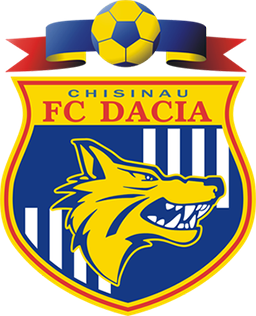
Fotbal Club Dacia Chișinău, commonly known as Dacia Chișinău or simply Dacia, was a Moldovan football club based in Chișinău, which last played in the village of Speia, Anenii Noi. They participated in the Divizia Națională, the top division in Moldovan football.

Dacia Ripensis was the name of a Roman province in the northern Balkan peninsula, immediately south of the Middle Danube. Its capital was Ratiaria. It was a district less urban than neighbouring Dacia Mediterranea and more militarized; "military camps and forts, rather than cities, were typical of the province". Besides Ratiaria, Oescus was the major settlement.
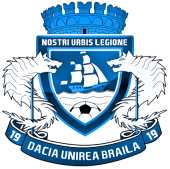
Asociația Fotbal Club 1919 Dacia Unirea Brăila, commonly known as Dacia Unirea Brăila, is a Romanian football club based in the city of Brăila, Brăila County, which competes in the Liga III.

The Dacia Sandero is a subcompact car/supermini (B-segment) car produced and marketed jointly by the French manufacturer Renault and its Romanian subsidiary Dacia since 2007, currently at its third generation. It has been also marketed as the Renault Sandero in certain markets, such as Russia, Latin America, Iran, Egypt, and Sub-Saharan Africa.
Much of the Romanian manufacturing industry consists of branch plants of foreign firms, though there are some important domestic manufacturers, such as Automobile Dacia, Ford Romania, Roman Braşov and Igero. In 2018, est. 500,000 automobiles were produced in Romania.

The Dacia Duster is a family of automobiles produced and marketed jointly by the French manufacturer Renault and its Romanian subsidiary Dacia since 2010. It is currently in its second generation, launched in the autumn of 2017. It is marketed as the Renault Duster in certain markets such as Latin America, Russia, Ukraine, Asia, the Middle East, South Africa, and New Zealand. The first generation was rebadged and restyled as the Nissan Terrano in CIS countries and India. It was introduced in March 2010, and is the third model of the Dacia brand based on the Logan platform, after the Sandero.
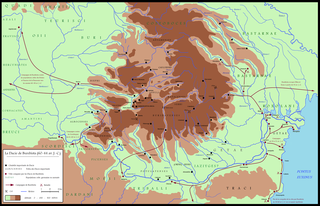
Teurisci was a Dacian tribe at the time of Ptolemy. They were originally considered a branch of the Celtic Taurisci (Noricum), who moved to Upper Tisza. However, the archaeology shows that Celts have been absorbed by Dacians, at some point creating a Celto-Dacian cultural horizon in the upper Tisza.

Potulatenses was a Dacian or Getian tribe.

Saldenses was a Dacian tribe.

Piephigi was a Dacian tribe.

Cumidava was originally a Dacian settlement, and later a Roman military camp on the site of the modern city of Râşnov in Romania.

The appearance of Celts in Transylvania can be traced to the later La Tène period . Excavation of the great La Tène necropolis at Apahida, Cluj County, by S. Kovacs at the turn of the 20th century revealed the first evidence of Celtic culture in Romania. The 3rd–2nd century BC site is remarkable for its cremation burials and chiefly wheel-made funeral vessels.
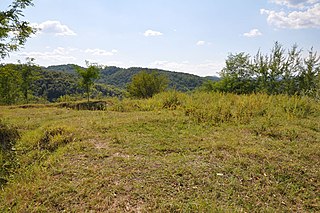
Buridava (Burridava) was a Dacian town. situated in Dacia, later Dacia Apulensis, now Romania, on the banks of the river Aluta, now Olt.

The Dacia Lodgy was a compact MPV which was unveiled jointly by the French manufacturer Renault and its Romanian subsidiary Dacia, officially launched at the 2012 Geneva Motor Show.
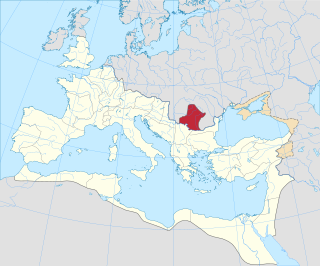
Roman Dacia was a province of the Roman Empire from 106 to 271–275 AD. Its territory consisted of what are now the regions of Oltenia, Transylvania and Banat. During Roman rule, it was organized as an imperial province on the borders of the empire. It is estimated that the population of Roman Dacia ranged from 650,000 to 1,200,000. It was conquered by Trajan (98–117) after two campaigns that devastated the Dacian Kingdom of Decebalus. However, the Romans did not occupy its entirety; Crișana, Maramureș, and most of Moldavia remained under the Free Dacians.
References
- ↑ Oltean, Ionana (2007). Dacia. Routledge. p. 46. ISBN 978-0-415-41252-0.
- ↑ "LacusCurtius • Ptolemy's Geography — Book III, Chapter 8". penelope.uchicago.edu. Retrieved 2020-04-20.